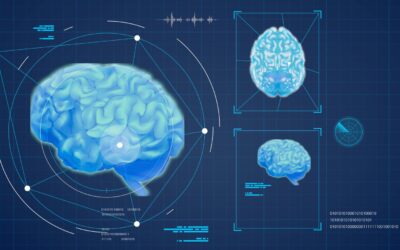Neurological disorders are complex conditions that affect various parts of the nervous system. They can result in a wide array of symptoms and present numerous challenges for both patients and healthcare professionals. In recent years, there has been a rapid development in drugs used to treat and manage these disorders. This article will delve into the intricate relationship between neurological disorders and the impact of neurological drugs, providing a comprehensive examination of this intricate subject matter.
Introduction to Neurological Disorders
Neurological disorders are medically classified as conditions that influence the brain, spinal cord, and nerves dispersed throughout the human body. Abnormalities in the structure, function, or biochemistry of these critical parts of the nervous system can lead to a diverse range of symptoms, including muscle weakness, paralysis, loss of sensation, seizures, confusion, and alterations in levels of consciousness.
The causes of neurological disorders can be as varied as their symptoms. They can emerge due to genetic disorders, congenital abnormalities, infections, lifestyle or environmental health issues, including malnutrition, and injuries to the brain, spinal cord or nerves.
Neurological disabilities encompass a broad range of disorders, such as epilepsy, autism, learning disabilities, neuromuscular disorders, brain tumors, and cerebral palsy, to name a few. Some of these conditions are congenital, appearing before birth, while others may be caused by tumors, degeneration, trauma, infections, or structural defects.
Role of Drugs in Neurological Disorders
Pharmaceutical interventions are a critical part of managing and treating neurological disorders. Drugs have the potential to alleviate symptoms, modify the course of the illness, and even cure certain conditions. However, they can also lead to the development of new disorders or exacerbate existing ones.
Drug-Induced Neurological Conditions
Drug-induced neurological conditions are a significant concern in modern medicine. They can occur as a result of single-agent drug regimens, but they are more likely to appear when multiple agents with shared risk factors are used simultaneously. These conditions can range from subtle impairments of executive functions, which can reduce a patient’s ability to regulate cognitive tasks like working memory and problem-solving, to more severe and potentially life-threatening conditions like seizures.
Pharmacological Intervention in Neurological Disorders
Pharmacological intervention is a critical strategy in managing neurological disorders. Drugs can be used to modify the disease process, control symptoms, and improve the quality of life for patients. However, the use of these drugs is not without challenges. The potential for drug-induced neurological conditions, interactions between multiple medications, and the complex nature of neurological disorders all contribute to the difficulty of achieving successful pharmacological intervention.
Impact of Neurological Drugs on Specific Neurological Conditions
Cerebrovascular Effects
Drug-induced cerebellar syndrome can result from several drugs, including phenytoin, lithium, carbamazepine, certain chemotherapeutic agents, and aminoglycoside antibiotics. This condition can lead to loss of coordination, dysarthria, and nystagmus. In many cases, cerebellar syndrome is reversible, but permanent syndrome may occur, particularly with high-dose administration and concurrent use of other risk-bearing agents.
Prothrombotic drugs are the primary consideration for cerebrovascular diseases, having both arterial and venous effects. For instance, the use of low-dose oestrogen combined oral contraception (COC) can increase the risk of ischaemic stroke, particularly in women with other risk factors such as smoking, hypertension, and a history of migraine.
Cognitive Impairment and Delirium
Cognitive impairment and delirium represent significant drug-induced neurologic conditions, particularly in elderly patients. Delirium is typically acute in onset and involves fluctuations in cognition, mood, attention, and arousal. It can be reversed when the underlying causative agent is identified and removed.
Neuroleptic Malignant Syndrome
Neuroleptic malignant syndrome (NMS) is another drug-induced neurologic disorder caused by neuroleptic and antipsychotic drugs. Muscular rigidity, autonomic instability, fever, and changes in cognition are hallmarks of NMS, which is thought to result from dopamine receptor D2 blockade in the corpus striatum, hypothalamus, and spinal cord.
Movement Disorders
Drug-induced movement disorders (DIMDs) pose significant challenges for patients taking a variety of drugs. DIMDs can reduce quality of life, decrease drug adherence, and pose an increased risk of adverse outcomes due to compromised performance of motor skills needed for activities of daily living.
Seizure Disorders
Drug-induced seizures may be challenging to differentiate from new-onset unprovoked seizure disorders associated with medical conditions. Seizures are believed to occur when nerve cells in the brain signal abnormally. These abnormal electrical firings may impair movements, actions, and/or level of consciousness.
Serotonin Syndrome
Serotonin syndrome (SS) is an acute iatrogenic drug-induced condition, characterized by a constellation of predictable symptoms. It results from a serotonin excess and overstimulation of 5-HT receptors.
Insomnia
Insomnia is a common sleep disorder that can be exacerbated by medication. It can result in a reduction of a patient’s quality of life, increase the risk of comorbid medical and psychiatric illness, and pose an increased risk of accidental injury and/or death as a result of reduced ability to perform cognitive tasks.
Conclusion
Neurological disorders and their pharmacological management are complex and multifaceted. While drugs can offer significant benefits in the treatment and management of these disorders, they also have the potential to induce new neurological conditions or exacerbate existing ones. It’s crucial for healthcare professionals to remain vigilant in predicting and identifying potential drug-induced neurological conditions and ensure these conditions are managed effectively.

